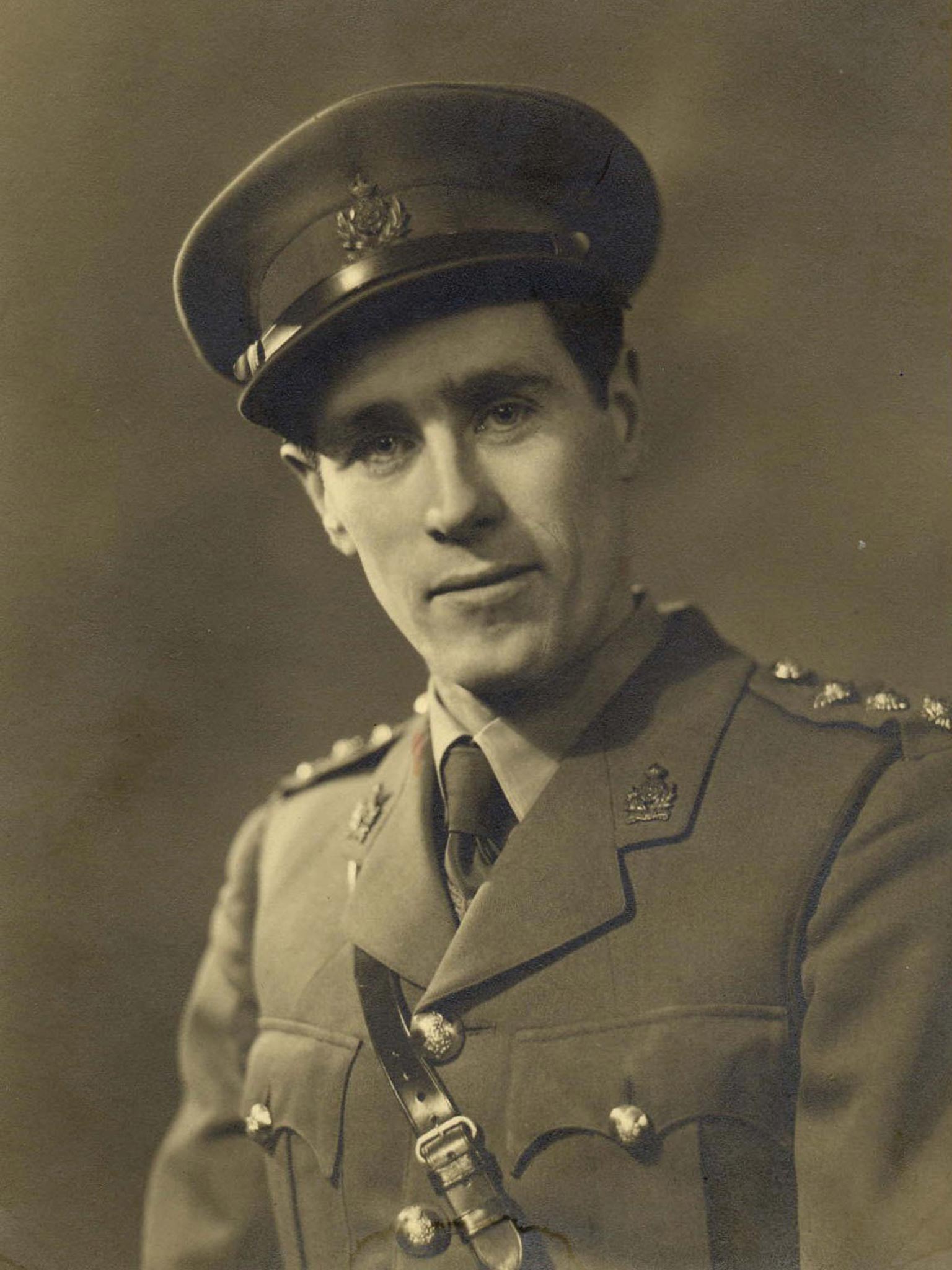Captain Jerry Roberts: Bletchley Park codebreaker who helped crack the Tunny code Hitler used to communicate with generals

Captain Raymond "Jerry" Roberts was the last survivor of an elite four-man team at Bletchley Park that cracked the German High Command's Tunny code, the system of high-level Nazi communications encryption machines used by Hitler and Mussolini to communicate with their generals in the field.
Roberts, a French and German linguist, was recruited to the British listening post in Buckinghamshire in 1941 following a recommendation from Professor Leonard Willoughby, his tutor at University College London, who had worked during the First World War in Room 40, the main cipher-breaking unit of that time. Roberts was interviewed and accepted by the renowned Colonel John "The Brig" Tiltman as a cryptographer and linguist at the Government Code and Cypher School.
Roberts was one of four founder-members of the Testery, an exclusive unit established in October 1941 and named after the man leading it, Major Ralph Tester, and including Captain Peter Ericsson and Major Denis Oswald. All four were fluent in German.
After a few months of breaking of a Double Playfair cipher system used by the German Military Police from 1 July 1942, the team was given the task of breaking Tunny, a cipher that only carried the highest-grade intelligence, messages from a handful of Hitler's top Generals and Field Marshals – including von Rundstedt, Rommel, Keitel and Jodl – to German Army HQ in Berlin, and despatches from the Führer himself.
The Germans were convinced that the Tunny cipher system was unbreakable. The system used 12 encryption wheels, four times as many as the famous Enigma machine, which was used in the field and carried standard military communications. Though the Tunny was more advanced and complex, faster and far more secure. it was less well-known than Enigma partly because it was only declassified in 2002.
The Tunny traffic was produced by a Lorenz CZ cryptography machine which the Bletchley Park mathematicians were able to replicate without seeing it. When German signallers mistakenly sent the same message twice with the same settings, the British team were able to reverse-engineer the process and build the machines responsible for the messages, a process later described by Bletchley Park as "an incredible feat of dedication". Initially, the codes were broken by hand before basic computers called Robinsons were used, while from 1943 the Colossus computer was introduced.
In an interview last year Roberts described the intelligence the team had gathered as "gold dust" because it referred to the movement of entire German armies.
The stream of intelligence proved vital at key junctures of the war. The Russians were warned three or four months in advance of a major German offensive, Operation Citadel, the Battle of Kursk in July 1943, which went down in history as the biggest ever tank battle. The Russians were told how the attack would be carried out – a pincer movement – as well as the numbers involved. If the Germans had been successful they would then have been available to fight on the Western Front. Other intelligence enabled the Allies to ascertain German movements when planning D-Day, helping save thousands of lives.
Between 1943 and 1945, Roberts and the Testery codebreakers were accessing 90 per cent of the German traffic with, at a conservative estimate, around 64,000 top-line Tunny messages intercepted and broken. Sir Harry Hinsley, a Bletchley veteran and official historian of British Intelligence during the Second World War, has estimated that the intelligence shortened the war by at least two years
Reminiscing many years after the war, Roberts said he had taken delight in reading Hitler's messages, sometimes even before the intended recipient. By the end of the war the Testery had grown to nine cryptanalysts among a total staff of 118, organised in three shifts working round the clock.
Born in Wembley in 1920, Raymond Roberts was the son of a pharmacist, while his mother was an organist at the local chapel. Roberts attended Latymer Upper School, Hammersmith, where he excelled, before progressing to University College London in 1939.
After the war he spent two years with the War Crimes Investigation Unit then pursued a successful 50-year career in market research that took him all over the world and enabled him to set up a businesses, he eventually sold to National Opinion Polls in 1993.
Roberts never forgot his past and became a tireless ambassador for the memory of those who had served their country in secret. Passionate about what he and his colleagues had achieved, he spent years campaigning for greater acknowledgement of his colleagues in the Testery, and the three men responsible for major discoveries – Alan Turing, who broke the naval Enigma; Bill Tutte, who broke the Tunny system in spring 1942; and Tommy Flowers, who designed and built the Colossus, which sped up some stages of the process of breaking Tunny. "It was a war where we knew comprehensively what the other side were doing, and that was thanks to Alan Turing, who basically saved the country by breaking Enigma in 1941," Roberts said.
In recognition of his wartime service, Roberts was awarded the MBE in 2013, and in April the same year was honoured with a set of commemorative stamps, which feature him receiving his MBE from the Queen. He said it was "extraordinary to be on the same stamp as Her Majesty, not many people have that privilege". Roberts wrote two books on his time at Bletchley Park, published in 2006 and 2009.
MARTIN CHILDS
Raymond Roberts, codebreaker and businessman: born Wembley, London 18 November 1920; MBE 2013; married Mei (seven children); died Liphook, Hampshire 25 March 2014.
Join our commenting forum
Join thought-provoking conversations, follow other Independent readers and see their replies
Comments